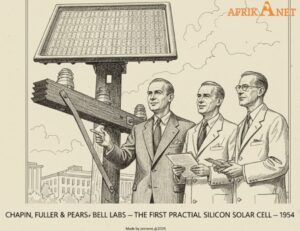----------------------- ---------------------------------------------------------
 More than 185 years ago, before anyone imagined homes powered by the sun or solar farms stretching across deserts, a quiet revolution began in a small Paris laboratory. In 1839, a 19-year-old French physicist named Edmond Becquerel made a discovery that would eventually change the course of human energy forever.
More than 185 years ago, before anyone imagined homes powered by the sun or solar farms stretching across deserts, a quiet revolution began in a small Paris laboratory. In 1839, a 19-year-old French physicist named Edmond Becquerel made a discovery that would eventually change the course of human energy forever.
While experimenting with metal electrodes and light, Becquerel noticed something unusual — when sunlight touched certain materials, it created a tiny electric current. That simple experiment revealed what we now call the photovoltaic effect — the scientific foundation behind every modern solar panel.
At the time, few could grasp the importance of his discovery. Electricity itself was still a mystery to most of the world, and the idea that sunlight could generate power seemed almost magical. But Becquerel had unknowingly planted the seed for one of the most transformative energy technologies in history.
The Birth of the First Solar Cell

Decades later, in 1884, American inventor Charles Fritts turned that discovery into something tangible — the first solar cell. He coated selenium with a thin layer of gold, creating a device that could convert light into electricity.
The cell’s efficiency was less than 1%, but it worked. For the first time in history, sunlight was turned into usable electrical energy. Fritts imagined a future where vast rooftops would capture sunlight to power cities — a vision that sounded like science fiction in the late 19th century.
🌍 From Selenium Cells to Solar Cities
 Fast forward to today: solar panels power homes, industries, electric cars, and even missions to Mars. The technology that started with Becquerel’s small spark of light now fuels entire economies and drives the global push for clean energy.
Fast forward to today: solar panels power homes, industries, electric cars, and even missions to Mars. The technology that started with Becquerel’s small spark of light now fuels entire economies and drives the global push for clean energy.
Countries across the world — especially in Africa — are now embracing solar as the key to electrification and sustainability. From Morocco’s Noor Ouarzazate Solar Complex, one of the largest in the world, to innovative off-grid solutions in Kenya, the same principle discovered in 1839 continues to light up millions of lives.
Final Thought
Solar energy isn’t just a technology — it’s a story of curiosity, persistence, and human imagination. From Edmond Becquerel’s tiny experiment to today’s billion-dollar solar industries, every panel we see is a tribute to the belief that the sun can power our lives.
And as Africa rises to lead the next chapter in renewable innovation, the story of solar energy feels more relevant than ever.

Bien
Fantastic. With the presence of sun and daylight in Africa, we should be there the continent of electricity and not the dark continent. Exploiting solar Energy should be the first priority of each government there. Some government recently were overthrowed because of electricity instability. May these solution reach them ?